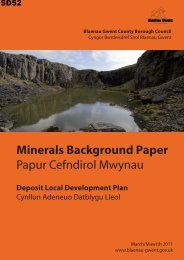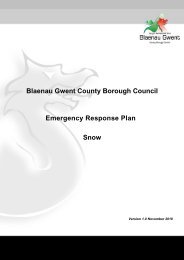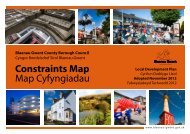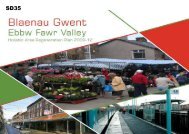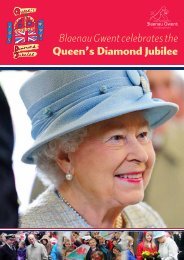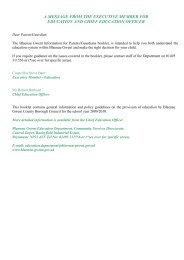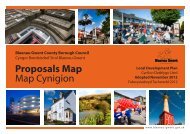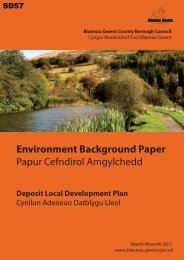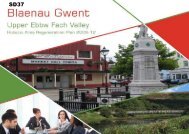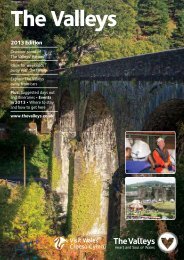Planning Policy Wales - Brecon Beacons National Park
Planning Policy Wales - Brecon Beacons National Park
Planning Policy Wales - Brecon Beacons National Park
Create successful ePaper yourself
Turn your PDF publications into a flip-book with our unique Google optimized e-Paper software.
majority of new development should be located in those settlements which have<br />
relatively good accessibility by non-car modes when compared to the rural area as a<br />
whole. Local service centres, or clusters of smaller settlements where a sustainable functional linkage<br />
can be demonstrated, should be designated by local authorities and be identified as the preferred<br />
locations for most new development including housing and employment provision. The approach<br />
should be supported by the service delivery plans of local service providers.<br />
4.6.8 Development in the countryside should be located within and adjoining those<br />
settlements where it can be best be accommodated in terms of infrastructure, access and habitat<br />
and landscape conservation. Infilling or minor extensions to existing settlements may be acceptable,<br />
in particular where it meets a local need for affordable housing, but new building in the open<br />
countryside away from existing settlements or areas allocated for development in development<br />
plans must continue to be strictly controlled. All new development should respect the character of the<br />
surrounding area and should be of appropriate scale and design.<br />
4.7 Managing urban form by means of green belts and green wedges 15<br />
4.7.1 Around towns and cities there is often the need to protect open land. Local planning<br />
authorities need to consider establishing Green Belts and making local designations,<br />
such as green wedges. Both Green Belts and green wedges must be soundly based on a formal<br />
assessment of their contribution to urban form and the location of new development and can take<br />
on a variety of spatial forms. The essential difference between them is the issue of permanence.<br />
Land within a Green Belt should be protected for a longer period than the current<br />
development plan period, whereas green wedge policies should be reviewed as<br />
part of the development plan review process.<br />
4.7.2 Both Green Belts and green wedges can:<br />
• provide opportunities for access to the open countryside;<br />
• provide opportunities for outdoor sport and outdoor recreation;<br />
• maintain landscape / wildlife interest;<br />
• retain land for agriculture, forestry, and related purposes;<br />
• improve derelict land; and<br />
• provide carbon sinks and help to mitigate the effects of urban heat islands<br />
However, the extent to which the use of land fulfils these objectives is not a material factor in<br />
determining whether land should be included within a Green Belt or green wedge.<br />
4.7.3 The purpose of a Green Belt is to:<br />
• prevent the coalescence of large towns and cities with other settlements;<br />
• manage urban form through controlled expansion of urban areas;<br />
• assist in safeguarding the countryside from encroachment;<br />
• protect the setting of an urban area; and<br />
• assist in urban regeneration by encouraging the recycling of derelict and other urban land.<br />
52<br />
<strong>Planning</strong> <strong>Policy</strong> <strong>Wales</strong> Edition 3 - July 2010 - Chapter 4 <strong>Planning</strong> for Sustainability


